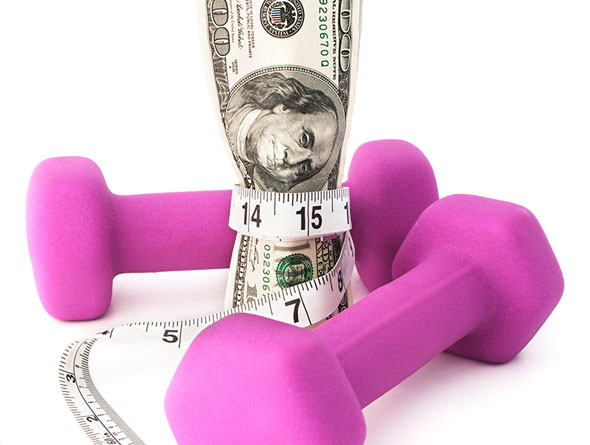Sleep: are you getting enough?
May 14, 2018
Can I get a Rebate for Exercise Physiology?
June 15, 2018Nutrition for Physical Fitness

Written By: Brittani Kolasinski (BHSc Nut, AdvDip Nut Med)
IG: @well_fed_
Nutrition is the foundation of how our body’s function down to a cellular level. Our macronutrients (carbohydrates, proteins and fats) provide us with energy in the form of calories. However, it is largely due to the micronutrients present in the diet to be able to efficiently extract this energy and utilise it in the best possible way to increase endurance, stamina, muscle recovery and obtain peak performance. Micronutrients act as enzymes to catalyse the biochemical reactions needed for these functions in the body. With this in mind, it is important to ensure that your diet is not only supporting your energy levels to maintain daily activity, but also to provide nutrients to aid the body to recover post exercise, to reduce the oxidative damage and to support muscle and tissue strengthening and repair.
Micronutrients needed for energy and exercise performance
Oxidative stress occurs as a result of any metabolic process (such as digestion, and exercise). Both resting and contracting skeletal muscles can produce oxygen species and although low levels are required for the muscles function, higher levels can promote imbalances and contribute to muscle weakness and fatigue. Replenishing with antioxidant nutrients helps to counteract the effects of this oxidation and enhances the recovery post exercise (Powers & Jackson, 2008).
Antioxidant nutrients include Vitamins A, C, E, D, zinc, selenium and coenzyme Q10. Additional compounds within foods (largely fruits, vegetables, herbs, spices, nuts, seeds, tea and coffee) are known as polyphenols which also act as antioxidants in the body, some common ones include:
- Betacarotene – largely found in carrots and other bright orange, red and deep green vegetables
- Lycopene – found in tomatoes, absorption is increased when the tomatoes are warmed
- Luteine – found in squash varieties, peas, green leafy vegetables, pumpkin and carrots
- Anthocyanins – found in deep purple, blue and red fruits and vegetables – berries, for example
B Group Vitamins
Major players in energy production are B group vitamins – B1, B2, B3, B5, B6, B9 and B12 as well as choline. These work together in synergy, allowing energy to be extracted from the metabolism of our macronutrients. They are also needed for the secretion of digestive enzymes, to create neurotransmitters in the central nervous system and also work within the process of methylation – a complex biochemical procedure that occurs within every single cell – making it a crucial part of human health and function of the human body.
Food sources of these energy giving vitamins are eggs (whole, with yolk), brown rice, leafy green vegetables, lentils, peas. However, B12 is commonly deficient in vegans and some vegetarians, as its only found within animal-based foods. Supplementation may be warranted in some individuals following a plant-based diet.
Magnesium
This mineral plays a pivotal role in energy production, but also acts as a muscle relaxant and is needed for muscle contraction and nerve impulses – all essential processes involved in exercise and physical activity (as well as general function of the human body). Exercise has been shown to shift magnesium within the body to compensate for the needs of exercise, this mineral is also lost through sweat and urine which can further increase the body’s demands by up to 20% (Nielsen & Lukaski, 2006).
Food sources and their levels depend greatly on the level of magnesium within the soil. Leafy green vegetables, like spinach, are rich in magnesium – particularly higher in organically grown varieties. Cacao (the REAL chocolate) is the richest food source known, it can be consumed in many forms – see recipes below for inspo.
Coenzyme Q10 (CoQ10)
An essential element needed by every single cell in the human body. Its known to possess antioxidant benefits and contribute to healthy ageing. Its particularly important for the function of the heart and cardiovascular system – common cholesterol-lowering statin medications actually cause a deficiency in CoQ10. With any exercise program, the function of the heart and cardiovascular system are of importance, and a focus on keeping these organ systems well-nourished is key.
Food sources include grass-fed beef, free range poultry and eggs, fish, berries, nuts and seeds.
Iron
Known for its function in transporting oxygen through red blood cells, however it’s also involved in many of the steps of energy production and metabolism of foods. A common sign of deficiency is fatigue coupled with shortness of breath and pale complexion, particularly of the conjunctiva of the eyes. However, iron in excess is toxic the major organs and toxicity signs are similar to that of deficiency – this means that supplementation must never be taken unless deficiency is defined by the appropriate testing by your health care practitioner.
Food sources include red meats and poultry, eggs, lentils and spinach.
Zinc
Zinc acts on multiple pathways in the body – its supports immunity, skin health and wound repair, but is also needed for the metabolism of carbohydrates and fats as well as possessing antioxidant properties.
Food sources include red meat, nuts and seeds – particularly pumpkin seeds, sesame seeds and cashew nuts, however oysters take the cake when it comes to levels of zinc per gram!
Hydration
This is key to maintain any exercise or physical performance. We are 60% water, and we lose water in the form of sweat when exercising – not only just water but essential electrolytes as well – including calcium, magnesium and potassium. A great way to replenish these stores is through drinking water with rock salt or sea salt, or coconut water – which contains all essential electrolytes. Be sure to consume adequate water when training.
Please keep in mind that this article is a general guide and in terms of diet there is no ‘one size fits all’ approach. Working with a Nutritionist to tailor a specific program to your needs can be of great benefit to reach your health goals, especially when combined with an exercise or rehabilitation program.
References
Nielsen, F. H., & Lukaski, H. C. (2006). Update on the relationship between magnesium and exercise. Magnesium research, 19(3), 180-189.
POWERS, S. K., & JACKSON, M. J. (2008). Exercise-Induced Oxidative Stress: Cellular Mechanisms and Impact on Muscle Force Production. Physiological Reviews, 88(4), 1243–1276. http://doi.org/10.1152/physrev.00031.2007

